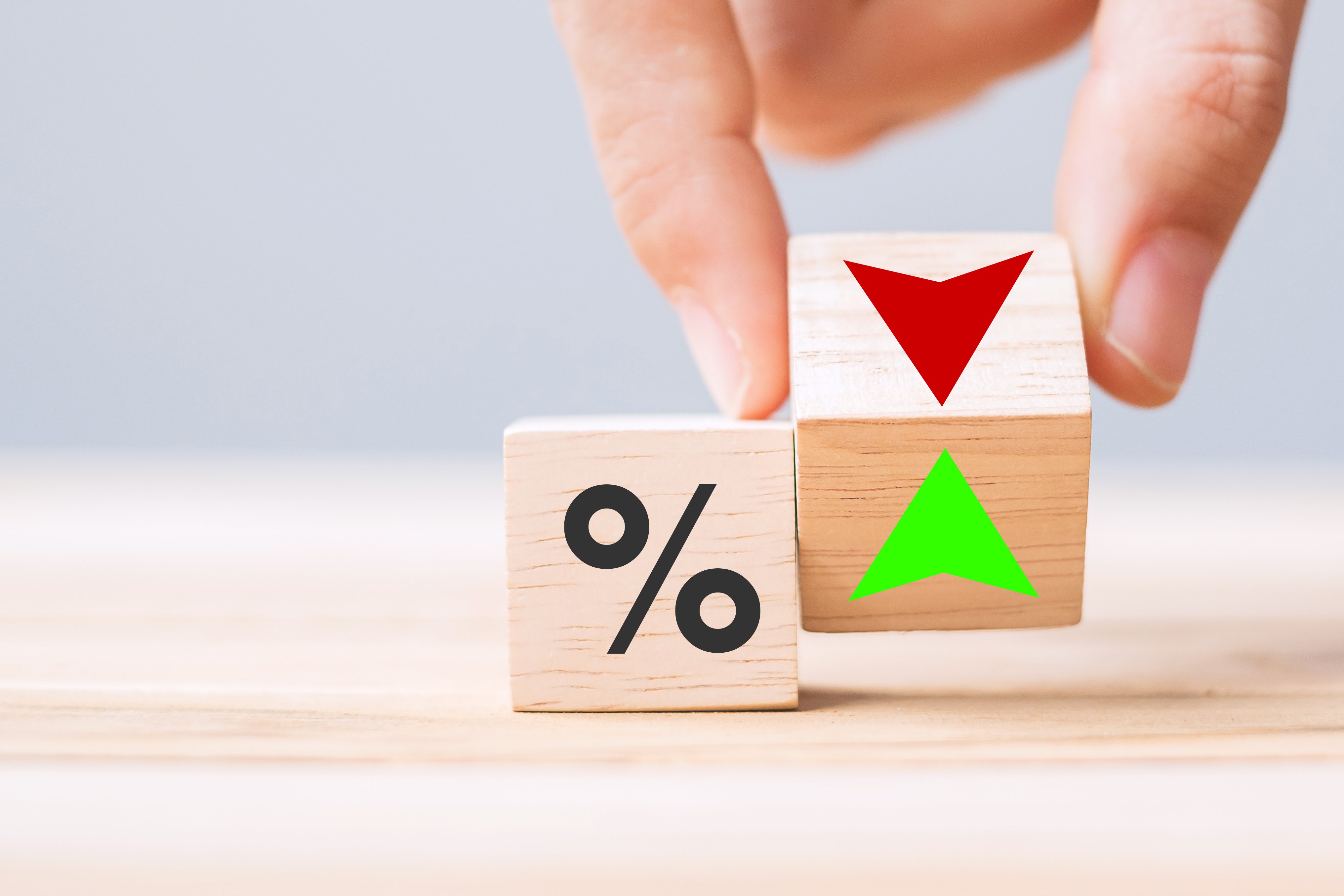Disclaimer: PropStream does not offer financial advice. We recommend consulting a financial professional and performing thorough research before making an investment decision based on current or future mortgage interest rates.
Since March 2022, the Federal Reserve has raised its Federal Funds Rate—which serves as a benchmark for all other interest rates—11 times to a 22-year high. Average mortgage rates have followed suit, topping 8% for the first time since 2000. However, buyer activity has started to slow, with home sales hitting a 13-year low in September.
As a real estate pro, it’s important to understand how mortgage interest rates affect the housing market so you can make more informed business decisions.
Table of Contents |
Key Takeaways:
🔑 Fluctuations in mortgage interest rates significantly impact home affordability for buyers. A seemingly modest increase in interest rates can substantially raise monthly payments, potentially affecting buyers' ability to qualify for loans.
🔑 Mortgage rates influence buyer behavior, with rising rates often leading to a decline in buyer demand. Homeownership becomes more expensive, discouraging potential buyers.
🔑 Understanding the factors influencing mortgage rates, primarily the Federal Reserve's monetary policy, is crucial for anticipating market trends.
The Impact of Mortgage Rates on Home Affordability
Considering that 80% of homebuyers (and 97% of first-time homebuyers) finance their home purchase, changes in mortgage interest rates can have a dramatic impact on home affordability.
Consider the following:
A $500,000 30-year fixed-rate mortgage at a 3% interest rate would have a monthly mortgage payment of $2,108. The same mortgage at a 7% interest rate would have a monthly payment of $3,327. That’s an extra $1,219 monthly and $438,840 over the 30-year loan term—nearly the original loan amount.
Keep in mind that most traditional lenders want homebuyers to pay no more than a third of their gross income on housing. So, a homebuyer earning $100,000 per year could theoretically get approved for the $500,000 mortgage at 3% (assuming they meet the other creditworthiness requirements). However, the buyer would unlikely qualify for the same mortgage at 7%. This is a problem today, as the average US salary is around $60,575, and the average cost of a home today is over $400,000.
How Mortgage Rates Change Buyer Behavior

Since mortgage rates impact home affordability, they, in turn, impact buyer activity.
Buyer Demand
When mortgage rates rise, and home ownership becomes more expensive, buyer demand tends to decline. When mortgage rates fall and homeownership becomes more affordable, buyer demand tends to pick up.
This explains why mortgage applications are declining: Higher mortgage rates discourage homebuying. According to the Mortgage Banker Association, mortgage application activity recently fell to its lowest since 1995. Similarly, existing home sales fell to a 13-year low of 3.96 million in September.
Even though 7-8% mortgage rates are relatively normal compared to historical averages, many homebuyers have become accustomed to the low 3-4% rates of the past 15 years.
Plus, the average cost for a home in the United States is about 642% higher than when interest rates were at their height in 1981, at 16.35% ($64,600 in 1981 compared to $479,500 in 2022). Although the interest rates were nearly double in 1981, the increase in median home prices compared to the rise in salary for the average American household ($22,390 in 1981 vs. $74,580 in 2022; app. A 233% increase) has made the 7-8% interest rate have a more significant impact on home affordability in the modern day.
Refinancing Activity
Mortgage rates also affect refinancing activity. Refinancing replaces an existing loan with a new one, usually under better terms.
For example, a homeowner may want to refinance their outstanding mortgage debt if interest rates fall. Why? Because doing so could lower their monthly payment and the loan’s final cost. Additionally, a cash-out refinance could let them withdraw equity from the property to put toward home renovations or other financial needs.
When mortgage rates fall, demand for refinancing tends to rise. When mortgage rates rise, demand for refinancing tends to decrease.
Currently, the mortgage refinancing industry is relatively inactive. In Q1 2023, refinancing originations amounted to $47 billion, down over 90% from Q1 2021. The reason is simple: Fewer homeowners want to refinance when doing so typically means settling for a higher interest rate.
Meanwhile, some buyers take out new mortgages despite higher interest rates, expecting to refinance to a lower rate if and when interest rates decline.
The Effect of Federal Monetary Policy on Mortgage Rates
Now that you know how mortgage rates impact buyer activity, consider what causes mortgage rates to fluctuate in the first place.
The primary factor at play is federal monetary policy. The Fed deliberately manipulates interest rates to fulfill its dual mandate of promoting maximum employment and stable prices.
Inflation
If inflation (as measured by the consumer price index) runs higher than the Fed’s target rate of 2% (as it recently has), the Fed might increase its key interest rate to raise the cost of borrowing money, thereby cooling the economy. Likewise, if the inflation rate runs at or below 2%, the Fed might lower interest rates to encourage investment and economic growth.
Note: Changes in federal interest rates immediately impact 10-year treasury bond yields, to which many mortgage lenders peg their interest rates.
Additionally, mortgage lenders are sensitive to inflation itself. The faster the inflation rate, the lower the long-term value of money. To compensate for this decreased value, lenders often raise their interest rates.
In October, the annual U.S. inflation rate was 3.2%, well below its 9.1% peak in June 2022. If inflation continues falling, the Fed may be done hiking interest rates, which it hasn’t raised since July.
Employment and Consumer Spending
If unemployment is high, the Fed might lower interest rates to encourage businesses to expand by hiring more employees. Lower rates also encourage more consumer spending, further supporting businesses' hiring ability.
Conversely, when unemployment is low, the Fed might increase interest rates to prevent the economy from overheating. Additionally, lenders may feel more confident about borrowers’ ability to repay loans and raise their interest rates to capitalize on favorable economic conditions.
As of October 2023, the U.S. unemployment rate was 3.9%, indicating a resilient job market despite higher interest rates (a healthy unemployment rate is 3-5%). Additionally, consumer spending was up 0.4% from August to September.
How to Anticipate Future Mortgage Rates

Nobody knows where mortgage rates will be in the future, but it’s helpful to estimate the direction they will go to make investment decisions accordingly.
The Fed’s Economic Outlook
At its most recent FOMC meeting, the Fed didn’t rule out another rate hike to combat inflation pressures.
At the same time, the central bank has made significant progress in bringing down inflation. Encouragingly, core inflation for the five months ending in October was at a 2.8% annual rate. Consequently, some investors believe the Fed may be done hiking interest rates and may even cut them by May next year.
Historically, interest rates follow economic cycles. This means that over time, they go up and down, though predicting their peaks and troughs is nearly impossible.
The Bond Yield Curve
A common way to gauge future interest rates is to look at the U.S. bond yield curve, which shows the yields of different treasury bonds at various maturity dates (1 month to 30 years).
If the graph shows yields are lower for short-term bonds (a standard yield curve), investors expect interest rates to rise. Conversely, if the graph shows yields are higher for short-term bonds (an inverted yield curve), investors expect interest rates to fall.
As it stands now, the bond yield curve indicates interest rates are set to fall. Of course, it’s impossible to predict whether interest rates will rise or fall, as other indicators show a resilient economy that could keep interest rates high.
Ultimately, some experts expect interest rates to fall in 2024 or 2025, while others expect them to stay high indefinitely.
Business Strategies for Adapting to Current Mortgage Rates
As a real estate professional, you must adapt your strategy to work with current mortgage rates and the resulting buyer behavior patterns if you want to continue growing your business.
In a high mortgage rate environment, real estate pros must get creative with where they find new leads, as high mortgage rates slow buyer activity.
Pursuing motivated sellers in off-market properties can be the golden ticket. Life doesn’t stop just because the real estate market has changed, which means homeowners will always experience situations where they still need to sell and/or buy.
PropStream It!
With PropStream, agents, investors, brokers, and others can find these homeowners in minutes, using Quick Lists like:
- Pre-foreclosure
- Divorce
- Pre-probate
- Liens
- Bankruptcy
And more!
| Sign up for a free 7-day trial today and get 50 leads on us! |
